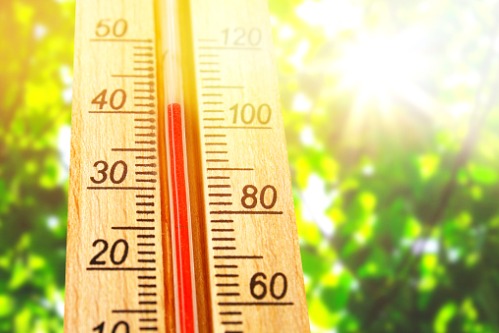
7 Tips to Help Your Child Manage Asthma
As a parent, you want to do everything you can to protect your child. This includes keeping them safe from asthma. Asthma is a chronic disease that affects nearly 6 million kids in the US. If your child has been diagnosed with this potentially life-threatening condition, finding ways to help them manage their symptoms is essential.
Fortunately, by working with your child’s healthcare team and taking some simple steps at home, you may help your child keep their asthma at bay. Furthermore, understanding the signs of an asthma attack is paramount in managing their condition.
Ways to Help Your Child Manage Asthma Symptoms
There are many things you may do to allow your child to live a healthy life despite being diagnosed with asthma. By following these tips, you may be able to reduce the number of asthma attacks your child has and further manage their condition.
1. Have an Asthma Action Plan in Place
An asthma attack may occur without warning, so it’s important to be prepared. One way to do this is by having an asthma action plan. This written plan, developed by you and your child’s healthcare team, outlines what to do when your child is having an asthma flare-up. It is vital to discuss and review the plan with your child regularly. By doing so, they will know what to do if they start showing signs of asthma.
Your child’s asthma action plan should include:
- A list of your child’s asthma triggers
- Information on how to avoid triggers
- Instructions on medications to take and how often to take them, both for daily control and during an asthma flare-up
- The name and phone number of your child’s healthcare provider
- The name and phone number of a backup provider, in case the regular provider is not available
- A step-by-step guide on what to do during an asthma flare-up
- An emergency contact list
Make sure you keep the asthma action plan in an easily accessible place, such as on the refrigerator. In case you are unavailable, ensure everyone in your household knows where to find the action plan. Since an asthma attack may strike at any moment, it’s critical to inform your child’s school about their asthma action plan as well. It’s also crucial to have a supply of your child’s asthma medications on hand in case of an attack. Moreover, keep track of expiration dates and replace any expired medication according to your healthcare provider’s instructions.
2. Know the Signs of an Asthma Attack
It’s important to be able to tell when an asthma attack is coming so you can take steps to prevent it or manage it effectively. If your child is presenting any of the following symptoms, it’s time to review the asthma action plan and take the appropriate steps.
The most common signs of an asthma attack are:
- Coughing
- Wheezing
- Shortness of breath
- Tightness in the chest
- Rapid breathing
- Pale or blue skin color
- Fatigue
- Anxiety
If your child is showing any of these signs, follow the steps outlined in their asthma action plan. If you don’t have an asthma action plan, or if the flare-up is severe, call 911 or take your child to the nearest emergency room. Asthma flare-ups may be frightening, but by being prepared and knowing what to do, you can help save your child’s life.
3. Recognize Your Child’s Asthma Triggers
Before you can help your child avoid asthma triggers, you need to know what they are. Once you’ve identified your child’s triggers, you can work on taking steps to prevent them. If you have difficulty determining your child’s triggers, talk to their healthcare provider or allergist. They can help you figure out what might trigger your child’s asthma and how to avoid those triggers.
Some common asthma triggers include:
- Tobacco smoke
- Air pollution
- Weather
- Pollen
- Dust mites
- Mold spores
- Cockroaches and other pests
- Cold air
- Exercise
- Respiratory infections
Of course, this is not an exhaustive list. Triggers may vary from child to child. Taking steps to avoid your child’s asthma triggers may involve creating a smoke-free environment or using an air purifier. If your child is allergic to pollen, you may need to keep them inside on days when the pollen count is high. It’s also essential to have a plan in place for dealing with unavoidable triggers, such as cold air.
If your child has exercise-induced asthma, have an inhaler handy whenever they participate in sports or any other physical activity. It may also be a good idea for your child to use their inhaler before doing any strenuous exercises.
Other ways to avoid triggers include:
- Washing bedding in hot water once a week to get rid of dust mites
- Encasing pillows, mattresses, and comforters in allergen-proof covers
- Keeping the house clean and free of clutter to reduce the chances of attracting pests
- Vacuuming frequently with a HEPA filter vacuum
- Mopping floors with a damp mop
- Cleaning bathrooms and kitchens regularly to prevent mold growth
- Fixing any leaks or standing water in the home
- Staying up-to-date on vaccinations to prevent respiratory infections
4. Take Medication as Prescribed
When your child has asthma, it’s crucial they take their medication as prescribed. This includes both long-term control medications and quick-relief inhalers. Long-term control medications are taken daily to manage the condition and prevent symptoms. Quick-relief inhalers are used when symptoms start and may assist in stopping an asthma attack.
Furthermore, nebulizers and steroids may also be prescribed. Nebulizers are devices that turn liquid medication into a fine mist that can be inhaled. Steroids are taken orally or through an inhaler and may reduce airway inflammation. These medications may be effective in managing asthma but must be taken as prescribed to work correctly.
5. Use a Peak Flow Meter
A peak flow meter is a device that measures how well air is flowing out of the lungs. This may help manage asthma because it can identify when your child’s asthma is getting worse. By monitoring their peak flow, you may catch an asthma flare-up early and take steps to prevent it from worsening.
6. Get the Flu Vaccine
The flu may affect anyone. However, it is particularly dangerous for people with asthma. This is because the flu may cause a severe asthma flare-up. To potentially prevent this, it’s important your child gets a flu vaccine every year. Before getting the vaccine, talk to your child’s doctor.
7. Use Air Purifiers and HEPA Filters
Using an air purifier and HEPA filters is another way to keep your home well-ventilated. Air purifiers remove airborne irritants from the air, while HEPA filters trap them. HEPA filters may be used in conjunction with air purifiers or on their own. You may find these filters and air purifiers at most home improvement stores.
Keep Your Child’s Asthma at Bay With Northeast Allergy
One of the best ways to manage asthma is to visit a doctor who specializes in treating the condition. At Northeast Allergy, Asthma & Immunology, we strive to assist our patients in keeping their asthma under control. We offer various services, such as allergy testing, immunotherapy, and asthma education.
Our team of allergists will formulate an asthma action plan specifically for your child. We will also educate you on how to identify and avoid triggers. If you’re looking for an allergist to help manage your child’s asthma, schedule an appointment today.



